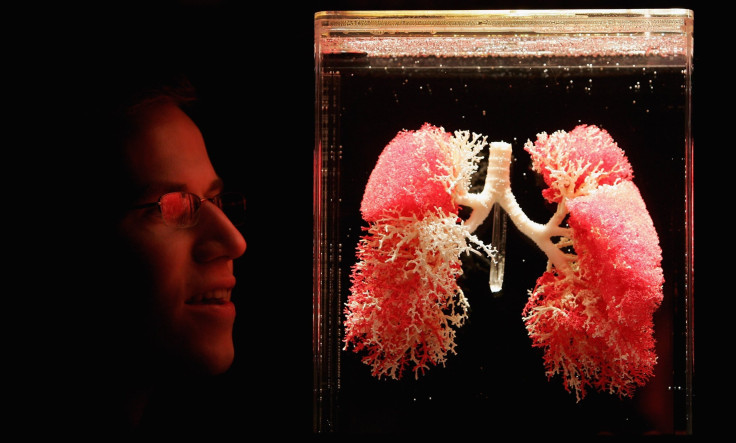What Do Lungs Do? Help Us Breathe And Maybe Even Produce Blood

Our lungs may be doing much more than just helping us breathe. A series of experiments on mice, carried out by researchers at the University of California, San Francisco (UCSF), has revealed that these organs play a crucial role in blood production — a function that had hitherto been ascribed solely to the bone marrow.
The findings, described in a study published Wednesday in the journal Nature, could have major implications for patients suffering from blood disorders like thrombocytopenia — caused due to a low platelet count.
“This finding definitely suggests a more sophisticated view of the lungs – that they’re not just for respiration but also a key partner in formation of crucial aspects of the blood,” the study’s senior author Mark R. Looney, a professor of medicine and of laboratory medicine at UCSF, said in a statement. “What we’ve observed here in mice strongly suggests the lung may play a key role in blood formation in humans as well.”
For the purpose of their study, the researchers used an imaging technique called two-photon intravital imaging, which allowed them to see how individual cells within the tiny blood vessels of a living mouse lung were behaving. The mouse strain being studied was engineered so that the platelets — blood cells that play a crucial role in clotting — emitted bright green fluorescence.
This revealed several surprising things. Not only did the mice lungs contain enough platelet-producing cells called megakaryocytes to produce over half of the animal’s total platelets, blood stem cells in the lung vasculature contributed to the production of a wide variety of other blood cells like neutrophils, B cells and T cells.
Further experiments showed that the megakaryocytes in the lung had originated in the bone marrow.
“It’s fascinating that megakaryocytes travel all the way from the bone marrow to the lungs to produce platelets,” study co-author Guadalupe Ortiz-Muñoz, also from UCSF, said in the statement. “It’s possible that the lung is an ideal bioreactor for platelet production because of the mechanical force of the blood, or perhaps because of some molecular signaling we don’t yet know about.”
The findings suggest that the lungs and the bone marrow work together in previously unknown ways to produce blood, and that scientists seeking to treat platelet diseases with cells produced from engineered megakaryocytes should look to the lungs as a resource for platelet production.
“It has been known for decades that the lung can be a site of platelet production, but this study amplifies this idea by demonstrating that the murine [of or related to mice] lung is a major participant in the process,” Traci Mondoro, a scientist at the National Heart, Lung, and Blood Institute, who was not involved in the study, said in the statement. “Dr. Looney and his team have disrupted some traditional ideas about the pulmonary role in platelet-related hematopoiesis, paving the way for further scientific exploration of this integrated biology.”
© Copyright IBTimes 2024. All rights reserved.






















